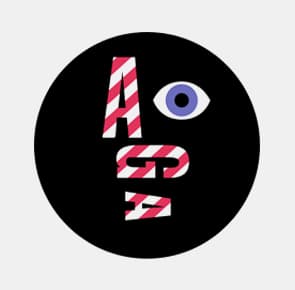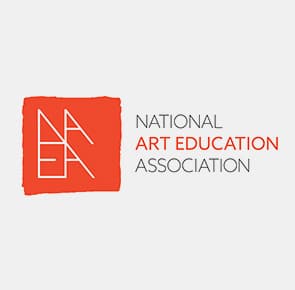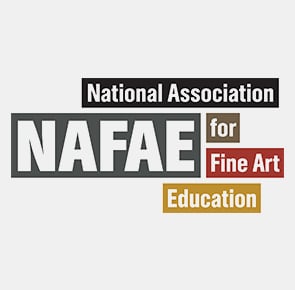Get Matched With Art & Design Colleges
What Does a Career in Art and Design Entail?
If your passion is something art-related and you are talented, you may have decided you want to pursue a career in the art and design field. These days, an art major is less about basket-making and more about a passion, drive, and talent you can use to make a good living. Though there are fewer 100% online options in art education, there are options in online game art degrees and other similar art fields.
If you have a skill for teaching others, perhaps a career as an art teacher is in your future. By teaching art to young students, you help those in your community learn to think in new ways that support logical thinking and help them develop their own talents through academics. There are many options for a arts or design career path you may want to choose from when it comes to the field of art and design or earning a bachelor's design degree or even a Master of Fine Arts. You'll need to select a degree level appropriate to the career path you choose and your options include these:
- Graphic Designer
- Animation
- Video Editor or Producer
- Art Directors in charge of Exhibitions
- Product Design
- Industrial Design
- Game Design
- Fashion Design
- Interior Desig
- Art History
- Fine Arts
Featured Online Programs

Components of A Successful Career in Art & Design
This field is wide open as you consider possible careers post-graduation. With the right classes and education, you may accept employment as an art agent, gallery director, or designer. If you enjoy designing home and business interiors, you may have a full, enjoyable career as an interior designer.
If your passion is film-making, then film or media production may take you to a career that includes the next smash hit. If you enjoy photography and telling stories with your pictures, why not become a photojournalist? You may travel to the next hot spot or take pictures that reveal horrific living conditions for a country’s minority population.
Because your options are so specific, it often requires a good deal of passion to succeed in an art and design career. If you aren't passionate about design, product design or industrial design aren't likely to hold your interest for long. You'll also need particular skills that focus on your intended career. If you want to work in game design and gaming entertainment, you'll need to prepare before you start by gaining knowledge focused on computer sciences, coding, programming, and more. You can take these as minors if you think you might be interested, or you can double major if you expect this to form a large portion of your career moving forward.
How to Become an Artist Designer
Once you’ve decided that you’re going to focus on a career in art and design, what’s the next step? Explore the different art and design programs that interest you the most. What options do they have? Studio art, product design, art history, interior design, fine arts, or media art? Film-making or photography?
You may choose to major in one area for your art degree program, then minor in another (photography major, journalism minor). As you progress through your chosen program, for whichever art and design degree you choose, you’ll be continuing to develop your critical and creative thinking processes so that you can succeed in your design career.
What is the Difference Between an Artist & Designer?
Both may seem to be the same. Both options rely on your ability to visualize; both are aesthetic.
The biggest difference between the two: Art raises questions while design solves them. Art inspires someone who looks at your work. Design motivates. Design marries aesthetics and function while art gives your audience hundreds of impressions to sift through.
What Essential Skills Should Every Artist or Designer Have?
 Artists and designers should hold similar skills. Working in an art- or design-related field requires both to be adaptable and open-minded.
Artists and designers should hold similar skills. Working in an art- or design-related field requires both to be adaptable and open-minded.
Creativity is an absolute must. Whether you’re going to be an artist or designer, you need to develop new art or business concepts by using color, shape, and design in new ways. This means you should be able to interpret someone’s ideas (when developing a new ad campaign)and have artistic sensibility, which entails knowing design elements (composition and color). Design software will assist you, but that innate knowledge of color and composition will help you to develop eye-catching designs.
Find Your Online Art & Design Program
Typical Artist/Designer Degree Requirements
To be accepted into a typical online Bachelor of Fine Arts (BFA) program, you need a suitable portfolio which you’ll submit to the Art Department in the university of your choice.
Once you're a university student accepted into the arts program, you'll need to take a specific number of credit hours in art and design courses. These can include classes in sculpture, photography, drawing and painting, interior design, or ceramics. On top of that, you should take art electives. Several of these courses should be upper-level.
Your art and design degree program will also require you to complete a capstone course, which is usually a senior exhibition of your completed artwork. To be allowed to graduate, you should have a certain grade point average (GPA) after completing your required credits.
Academic Standards for Artist/Designers
Art and design contains specialties that are true careers—this means that the program you choose will require you to maintain certain academic standards to complete the program.
Depending on which art or design specialty you choose, you may need to take studio-based concentrations. However, some non-studio concentrations, such as Art Education or Art History are available for you. If you will be working in or managing an art gallery, you’ll need the Art History concentration. The curriculum required in each degree program will lead you to study several techniques and media, which focus on a concentration.
Exam/Experience Needed for Artist/Designers
Depending on your career, you may need to take a licensing or certification exam that will enable you to work in your profession. For instance, art teachers are required to hold teaching licenses before they begin working in their classrooms.
Did you recognize your artistic talent early? If your family was encouraging, you may have created and sold some of your artwork while you were still in school. This may have solidified your decision to go into an art specialty that helped you to develop your talent further, so you would be able to become an artist.
What Essential Skills Should Every Artist or Designer Have?
 Artists and designers need to understand aesthetics and artistic composition. You need to visualize relationships between objects, their shapes, and functions. You must be able to take an abstract idea and help it to take shape. You’ll learn about theories of framing, composition, and abstraction in your art classes. Use this in your chosen art career.
Artists and designers need to understand aesthetics and artistic composition. You need to visualize relationships between objects, their shapes, and functions. You must be able to take an abstract idea and help it to take shape. You’ll learn about theories of framing, composition, and abstraction in your art classes. Use this in your chosen art career.
You’ll also need to be able to analyze information. You’ll explain your work to those who don’t understand what designers and artists do.
An associate degree in General Studies: Art and Design allows you to refine your artistic skills in well-equipped art studios. You’ll have plenty of opportunities to work with the newest artistic software programs. You’ll work on projects for the school’s organizations, allowing you to gain real-world experience. You may even win an arts internship.
Digital Graphics Technology (Associate of Applied Science)
- Core requirements, such as Rhetoric and Composition, Public Speaking, and Principles of Human Communication
- Mathematics Appreciation
- Visual Concepts
You’ll also have to take one of two classes—either an internship in Digital Graphics Technology or a class in Media Production services.
Technical requirements include:
- Digital Photography and Imaging, I
- Introduction to Web Design
- Print Media, I
- Computer Illustration
- Image Processing, I
- Design Principles
- Web Design, II
- Web Design for Small Businesses
- Print Media, II
- Advanced Computer Illustration
- Image Processing, II
- History of Media Design
- Professional Portfolio Design and Development
As you work toward your BS or BA in the art and design field, you’ll become familiar with design principles and elements of art. You’ll also learn to recognize the different points of view from other cultures. Expect to express verbally and in writing and in your portfolio your own aesthetic and future direction.
If you choose to conclude your degree seeking with your BFA, you’ll still have a solid education from which you can find excellent job opportunities. However, if you do decide to proceed with an online master’s degree, you’ll have even more.
Find Online Art & Design Programs
Graphics Design Major, BFA
At the bachelor’s level, this design major provides basic educational elements if you’re pursuing a design-related field. These fields include 3D design, art direction, and advertising.
General education art courses:
- Art Core comprises 18 hours
- Introduction to Studio Art, 1
- Introduction to 4-D Studio Art
- Introduction to Studio Art, II
- Drawing, I
- Western Art, I
- Western Art, II
Graphic Design
- The Idea of Graphic Design (taken in spring semester of the freshman year or as soon as possible after). Required for application to portfolio review.
Complete the following classes in sequence:
- Beginning Graphic Design, I
- Beginning Graphic Design, II
- Intermediate Graphic Design, I
- Intermediate Graphic Design, II
- Graphic Design Production
- Advanced Graphic Design
- Graphic Design Seminar
- Graphic Design Professional Seminar
Once you begin working on your MFA, you’ll be expected to work at an advanced level in Studio, Art History, or Art Education. In Art Studio, your concentrations include computer art, ceramics, painting, drawing, printmaking, photography, and sculpture. These also transfer over to the K-12 art educator.
Master of Fine Arts Degree in Studio Arts
Non-Thesis Option
- Critical Theory
- Art History
- Research Methods
- Various Studio Arts graduate courses
- Graduate Critique
- Electives - 9 credits
- Directed Project Research in Design
- MFA Project Research in Design
- MFA Graduate Exhibition
Some Concentrations for a Bachelors/Masters in Art and Design
The B.A. in Art, Concentration in Painting and Drawing has a firm foundation in the fundamentals of drawing. This program gives students a full education in drawing and painting, requiring students to go in-depth in their learning.
MFA in Studio (Ceramics)
In this concentration, professional skills and achievements in personal direction are emphasized. In the Ceramics program, your curriculum will have a strong interdisciplinary focus. You’ll receive a solid foundation on the history of Ceramics as you gain a strong technical mastery of the learning materials. You’ll work hard in the studio and learn from frequent group interactions with students from other art and design disciplines. You’ll focus on using several working methods.
Online Associates, Bachelors, Masters with Cost Range for Each
| Associate | Bachelors | Masters |
|---|---|---|
| $45,549 (Access. Design, Fashion Design) | $502/cr. hr. (online) | $2,144 (on campus) |
| $45,549 (Fashion March.) | $642/cr. hr. (on campus) | $2,589.75 (Virtual College) |
Difference, Impact of Pay Between AA, BA, MA and Experience
Once you have your online associate’s or bachelor’s degree in hand, you will be able to find a job in an art and design field. Of course, the higher you go in your education, the higher your pay will eventually be. There are financial benefits to extending your learning beyond your associate—and even your bachelor’s.
Find Online Art & Design College Programs
Field of Study with Entry-Level and Mid-Career Salries
| Field of Study | Entry-Level | Mid-Career |
|---|---|---|
| Advertising | $129,380 | $187,200 |
| Animators | $70,530 | $123,060 |
| Arts Journalism | $22,970 | $90,540 |
| Design Management | $51,130 | $170,230 |
| Documentary | $22,970 | $90,540 |
| Games Design | $46,040 | $129,520 |
| Graphic Branding/Media Design | $28,560 | $83,140 |
| Illustration | $21,590 | $102,540 |
| Photography | $19,400 | $75,080 |
| Photojournalism | $25,000 | $75,000 |
Salary by Occupation (Difference of Pay from Different Occupations and Degree Levels)
Different areas within the art and design field require different levels of knowledge and effort, which means they will come with wildly differing pay rates.
-
Art Directors
This position entails overseeing other artists and designers and their work. -
Craft and Fine Artists
This artist works to develop artwork that sends a message. Because the craft and fine artist works solo, they often work on commission (that is, other people make requests). As solo artists, they may not be able to support themselves just on their artwork. -
Fashion Designers
Fashion designers are responsible for the clothing and accessories we wear every day. They create original designs that are sold by stores or fashion houses, such as J.C. Penney or Donna Karan. Fashion designers are employed by the brand they create, allowing the store or designer name to sell a consistent style. -
Floral Designers
Floral designers work with live foliage and flowers to create live arrangements, either for show or at business conferences. You may also see original floral designs at social events. You expect to see floral designs at weddings and dances. -
Graphic Designers
As a graphic designer, you are given full responsibility for illustrations and the overall design for an ad or exhibition . Depending on your employer’s clientele, you may design covers for scholarly articles or school publications. -
Industrial Designers
In this field, you rely heavily on science and creativity. You develop new products that people use in their homes and offices. Before working on your designs, you collaborate fully with your client and understand what the consumer seeks in using the product. -
Interior Designers
As an interior designer, you may wear several hats, sometimes a few at a time. While working on a home or office is the best-known career, you may design an amusement park, a sustainable building, resort or hotel, or even a cruise ship. You may also design furniture. Medical offices and residential homes benefit from the work of interior designers. -
Jewelers and Precious Stone and Metal Workers
Jewelry making has some prehistoric origins, as early people made jewelry from animal bones and seashells. If this is your artistic choice, your work can express status or beauty to others.If you take rough gemstones and turn them into bright, sparkling stones, you are an artist. You’ll work with all types of gemstones, from rubies to diamonds.
You may choose to work with metals, transforming them into individual jewels.
-
Multimedia Artists and Animators
You’ll create characters and scenes when you become an animator or multimedia artist. You’ll have to listen closely to what others say about what they are looking for. Take courses in Fine Arts, Communications, and Media. These will equip you with the skills you need to take someone else’s ideas and give them life on the screen. -
Set and Exhibit Designers
This covers four different roles. As a set designer, you create drawings from discussions with the director and producer. Your design should be detailed enough that the builders and lighting designer can create the scene from what you have sketched out.As an exhibit designer you work in a museum, planning exhibit layouts and object displays. You’ll determine wall colors and the arrangement of items, then install and hang the artwork properly.
Salary by Occupation for Art & Design Graduates
| Occupation | Entry, Median Annual Salary | Mid-Career Median Annual Salary | Late-Career Median Annual Salary |
|---|---|---|---|
| Graphic Designer | $39,100 | $49,200 | $52,800 |
| Interior Designer | $40,400 | $55,100 | $60,600 |
| Art Director | $51,300 | $69,700 | $74,300 |
| Photographer | $35,200 | $48,500 | $58,300 |
| Multimedia Artist | $50,800 | $57,200 | $71,300 |
Important Questions to Ask (FAQ)
How Long Does It Take to Earn an Art and Design Bachelor’s Degree Online?
Some online programs are set up by quarters rather than semesters. If a Bachelor of Science in Graphic Design requires 180 credit hours, you’ll complete that in 15 quarters. Quarters last about 10 weeks. This means you’ll earn your BS in Graphic Design in approximately three years. Another university’s online art and design program may last three and a half years, which is a little closer to the traditional four-year undergraduate art program. Each class in their program lasts eight weeks.
Cost of Art/Design Bachelor’s Degree
College or university’s tuitions differs from between states—and within that state, different universities charge different in- and out-of-state rates.
Tuition may run $13,200/year. With fees, room, board, personal living allowances, art supplies and books, the final total is $30,200.
Residents of this region (New England) pay $28,000. After all other fees and expenses are added in, their bill is $45,000.
Out-of-state residents are charged $36,400; their final bill for attendance is $53,400.
Art and Design Bachelor’s Degree Coursework
Art and design students are required to take an introductory visual art course, a basic drawing class, and introductory film class.
They also take a basic design class, then delve into different eras and styles of art (ancient, medieval, gothic, romantic, modern, contemporary, non-western).
Another university’s art and design degree curriculum may require studio and elective studio courses. To round out their curriculum, an art and design degree program may require an international experience and a review of completed artwork, along with academic electives outside the art and design degree program.
Electives must be spread out between course levels (200 up to 400-levels).
Academic courses are required so students get full exposure to art and design topics in context, the arts, as well as history and a lecture series.
Does the School Have the Major(s) You’re Considering?
 Once you know what art and design degree major you’re going to declare, you need to find the university that offers this major. After acceptance into the art program of your choice, you’ll take your required academic classes and begin taking the art and design classes in your chosen emphasis or concentration.
Once you know what art and design degree major you’re going to declare, you need to find the university that offers this major. After acceptance into the art program of your choice, you’ll take your required academic classes and begin taking the art and design classes in your chosen emphasis or concentration.
You may choose an emphasis in teaching art in the K-12 grades, art studio, which encompasses sculpture, printmaking, photography, painting, drawing, computer graphics, fine arts, or art history. You may be interested in working in a museum, curating art or working as a museum administrator. For this, you should focus on art history.
Art and design degrees can cover dance, architecture, urban planning, drama, and film; music and writing are also included in this major. It’s time to choose your concentration.
How Many Students Graduate “On Time,” in Four Years?
 With attentive, proper advising, you’ll know what classes you’re required to take. If your chosen art program is a “cohort” program, you’ll take classes in a specific order with your fellow students. Your advisor should tell you what classes you should take each semester. You should also keep yourself informed of any other course deficiencies you have so you don’t get an unpleasant surprise during your degree audit.
With attentive, proper advising, you’ll know what classes you’re required to take. If your chosen art program is a “cohort” program, you’ll take classes in a specific order with your fellow students. Your advisor should tell you what classes you should take each semester. You should also keep yourself informed of any other course deficiencies you have so you don’t get an unpleasant surprise during your degree audit.
Each major’s program is set up in such a way that you’re expected to take a specific number of credit hours, which, as long as you pass every class, means you’re more likely to graduate on time. Every university wants to see 100% of its students graduate on time. This is why advising is such an important service.
What Kind of Accreditation does the Online Program Hold? How is it Regarded in the Field?
Accreditation is vital for every academic program. An accredited program means that you’ll be able to find gainful employment when you graduate.
An accredited art and design degree program is one that has the highest academic and artistic standards. The faculty keeps up with the most recent movements, as well as publishing their own research. Accredited programs are reviewed periodically to ensure that they are maintaining their high academic standards.
If you plan to pursue your master’s in art and design online, accreditation means you’ll be better qualified to attend graduate school, including your MFA and doctoral programs. The National Association of Schools of Art and Design is the agency that accredits university art and design degree programs. Look for this accreditation for every university you are considering.
Find Online Art & Design Programs
Software, Technology and Skills Needed
Graphic designers work with various technologies and software. Adobe InDesign and Photoshop are two such software programs. Both use processes that enable you to create designs that pop with color and creativity. With Photoshop, you’re able to manipulate photos for client jobs. You’ll also learn how to use animations and other special effects for your final designs.
View More About Popular ProgramsArt and Design Scholarships
-
Tim and Jean Norman Unsworth ’55 Scholarship
One scholarship per academic year. The administrators of this scholarship go through each application and decide who best personifies the goals of the donors and scholarship. The donors are Tim and Jean Norman Unsworth, Class of ’55. -
The Max Goldenberg Scholarship for Art and Design.
Amount: up to $6,100
Deadline: January 31,2021The creator of this scholarship, the Max Goldenberg Foundation, created this award in 2009. It is intended to help one deserving student per academic year who is studying any art or design discipline within the Art and Design Department. It is awarded annually..
Columbus College of Art and Design provides scholarships to recognized students who have won National YoungArts Foundation competitions. Five levels of National winners (Gold, Silver and Levels 1, 2 and 3) are chosen for four-year, half-tuition scholarships, which are coordinated with other financial aid awards. Winning this scholarship doesn’t count against other financial aid.
-
Scholastic Art Awards
CCAD’s Scholastic Art Awards are given to junior and senior art majors who submitted portfolios to Scholastic Art Awards and earned gold medals for their work. These students’ awards make them eligible for half-tuition scholarships, which are renewable for up to four years. Winners are then eligible for a $2,000 scholarship ($500 per year for four years toward their BFA program).
Professional Organizations
- AIGA
- NAEA
- NAFAE

AIGA
American Institute of Graphic Arts (AIGA)
AIGA is the oldest professional organization for graphic design. This organization is composed of more than 70 chapters and 25,000 members and works to promote design as a professional craft. AIGA points out graphic design’s strategic advantage. Members cooperate to enhance graphic design and its impact on all business disciplines and society.

NAEA
The National Art Education Association (NAEA)
This organization, founded in 1947, is the foremost professional membership organization devoted to visual arts educators. Educators teach at all levels (elementary, middle, and high school) of visual arts classes. More than 54,000 students who are members of the National Art Honor Society are also NAEA members. Chapters are located in all 50 states, D.C., U.S. possessions, Canadian provinces, U.S. military bases worldwide, and in 25 foreign countries.

NAFAE
National Association for Fine Art Education (NAFAE)
This education association invites Fine Arts educators in the UK to join and help further the interests and cultural relevance of Fine Art education. The NAFAE works to stay ahead of developments and decisions that affect the future of Fine Art by interacting with many groups.
Choosing an online Accredited College
As you look at and compare the different art schools, don’t forget to check for their accreditation status. Looking at graphic design programs, you’ll see that hundreds are accredited. Look a little deeper to find the right graphic design program for your goals. Even though each program teaches graphic design, you may be able to spot the differences from one program to the other.
Look for access to the newest software, which changes frequently. You want hands-on experience and you want to build your portfolio for your eventual internship and job search.
Online vs On-Campus vs Hybrid
You won’t get the same education from an on-campus program as you would from an online program. A hybrid program is also different from its brethren.
Face-to-face institutions give more opportunities to new students, such as orientations. Students in on-campus programs go to a physical classroom, where they and their classmates receive verbal assignments and expectations from instructors. Online students don’t receive these. It’s up to them to keep up with assignments, readings, tests, and virtual meeting times.
For students of hybrid programs, they get a little of both worlds. If you’re in this group, you’ll receive immediate input, and learn that you need to find techniques so you can keep up with assignments.
Frequently Asked Questions
Does the College Have Post Graduate Job Placement Help & Assistance?
Most art and design colleges and universities provide a Career Services office. Here, students anticipating graduation, as well as those who have already graduated and are looking for jobs, can request services from the counselors.
Counselors will help with resumes and cover letters. They schedule and put on career fairs and workshops, so students can apply for jobs in their fields. In addition, Career Services help students learn how to gain needed job experience and find employment within their job field.
Can I really get a career with a degree in art?
While many think that there are no options for someone with an art degree, that’s not completely true. However, you’ll have a better shot at a career if you have a secondary interest or set of skills that can complement your art degree. For instance, a user experience designer can make over $85,000/year, but you’ll need to have skills in computer design as well as knowledge of art and design. An architect can make excellent use of an art degree. With a better eye for color and shape, their designs are likely to be more eye-catching and better able to meet the expectations of a client. However, they will also need to understand engineering concepts and all the other things that make someone a great architect. That’s not to say that you have to have a second degree to make the most of an art degree. You can also work as an art director with nothing but your art degree, but those jobs are going to be more competitive than jobs that make use of more varied skill sets. You can succeed in any of these fields, but it’s all about the work you put in to make it happen.
Do I have similar options like an art design degree?
“Art” is a broad umbrella term that can apply to many things. When you are looking for your degree, there are options that fall under the umbrella of art that may not be called an art design degree. These include options like degrees in graphic design, game design, theater, fashion, fine art, digital arts, and much more. No matter your artistic interests or talents, there are likely good options for you. Make sure you consider all your options before making a final decision.
What soft skills might you need in art design?
While you are no doubt planning to work hard to improve your art and design skills, you should also be aware of the other soft skills you might need to succeed in your career. These include things like excellent communication skills so that you can more easily work with a team or have a meaningful conversation with a client that can help you parse exactly what they’re looking for. You’ll need interpersonal skills and be able to work well in a team for the same reasons. Other important things to cultivate are a strong work ethic and personal initiative. This can be especially important if you hope to make it as a working artist. No matter what role you eventually find for yourself, these skills will be helpful throughout your life and working career.
Search All Programs
